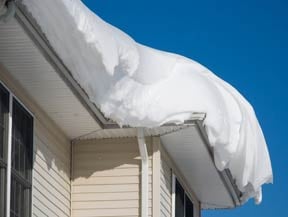Protect Your Home Against Winter's Rush

Just like football players look for holes in their competitor's defense, homeowners should first be on alert for missing shingles or deteriorated flashing (those metal seals around bends and joints on skylights and chimneys). More than 90 percent of roof damage occurs in these two areas, and spotting it early helps prevent bigger and more expensive headaches down the road.
"It really does make sense, financially, to perform inspections at least twice a year," says Bob Tafaro, president and CEO of GAF, North America's largest roofing manufacturer. "The best times are in spring, after severe weather hits, and then again in fall before the temperature and wind become too brutal."
Continuing the football metaphor, here are some more tips from the experts:
Know Your Opponent
Especially given the crazy weather we've been having, you'll want to examine the roof edge for wind damage, weaknesses or rusted nails, and handle repairs before the winter weather hits.
Next, be on the look-out for any spots indicating mold, algae and mildew growth -- especially if there's debris on your roof. (Hint: telltale signs include dark spots and discolored shingles.)
Call the Right Play
By "debris," we particularly mean piles of wet leaves, sticks and small branches. None of these are your roof's friend.
In fact, not only can they cause water to back up and flow under a roof causing rain or ice dams, but they're also a shelter for pests eager to eat through your home's top. So, routinely clean all gutters and drains, make sure the gutters are securely fastened, and check that downspouts point away from your house.
What to do should you discover damage? If you're at all interested in prolonging your roof's life, it really does pay to consult a professional roof contractor who is insured and uses quality materials. A free service that makes finding one in your area easy can be found at www.gaf.com.

No comments: